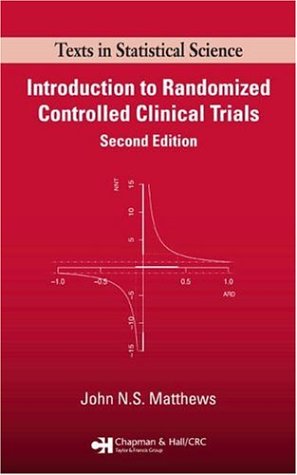

Most ebook files are in PDF format, so you can easily read them using various software such as Foxit Reader or directly on the Google Chrome browser.
Some ebook files are released by publishers in other formats such as .awz, .mobi, .epub, .fb2, etc. You may need to install specific software to read these formats on mobile/PC, such as Calibre.
Please read the tutorial at this link: https://ebookbell.com/faq
We offer FREE conversion to the popular formats you request; however, this may take some time. Therefore, right after payment, please email us, and we will try to provide the service as quickly as possible.
For some exceptional file formats or broken links (if any), please refrain from opening any disputes. Instead, email us first, and we will try to assist within a maximum of 6 hours.
EbookBell Team

4.8
34 reviewsPrefaces
First Edition
Clinical trials are experiments performed on human subjects, usually
patients, in order to assess the efficacy of a treatment that is under investigation.
Over the last two to three decades randomized concurrently controlled
clinical trials have become established as the method which
investigators must use to assess new treatments if their claims are to find
widespread acceptance. The methodology underpinning these trials is firmly
based in statistical theory, and the success of randomized trials perhaps
constitutes the greatest achievement of statistics in the second half of the
twentieth century. As such it is important that students of statistics should
be able to study this area of their subject as soon as possible in their courses.
Whereas there are many excellent books on clinical trial methodology,
almost all are written for the practitioner, whether statistician or doctor, who
is about to participate in the running of a trial. There is a natural tendency
in such books both to cover administrative issues and to keep to a minimum
any mathematical passages. However, while trial administration is of
undoubted importance, too much emphasis on it is unnecessary and an
unwelcome distraction for students making their first acquaintance with the
underlying principles. Moreover, for a readership whose knowledge of mathematics
is likely to be substantially greater than their knowledge of medicine,
many of the principles involved can be introduced more precisely and succinctly
by the appropriate use of mathematics. This book is intended as an
introduction to the statistical methodology that underpins randomized controlled
trials, and is aimed primarily at the student of statistics. Administrative
aspects receive little emphasis and, if it is believed that it would help
the primary readership, a mathematical approach is adopted.
Although it is hoped that many will find the book useful as an introduction
to the subject, the needs of final-year undergraduate or postgraduate students
at British universities have been my main concern. However, there is
considerable variation within this group in the statistical techniques they
already know, and I have attempted to rely only on a few basic prerequisites.
This has led to a slight distortion of the subject matter. For example, so that
a knowledge of logistic regression is not needed for this book, trials with
binary outcomes are given less prominence than might be expected from
their prevalence in practice. The complete avoidance of survival analysis
perhaps leads to an even greater distortion. However, I believe these distortions
are justified by the wider accessibility that results.
Second Edition
The change of publisher between editions, from Edward Arnold to Chapman
& Hall/CRC, has given me the opportunity to make corrections and add
some new material. The aim, to write a book for students of statistics focusing
on statistical rather than administrative aspects of clinical trials, remains
the same. Some extra material on more sophisticated methods for balancing
clinical trials with binary or survival time outcomes. Many trials have outcomes
of this kind, and in the preface to the first edition I acknowledged
that the exclusion of outcomes of these forms was a distortion of the subject.
This was done to ensure that the book did not require the reader to be
familiar with more sophisticated methods of analysis, such as logistic regression
and proportional hazards models. On reflection, this was an unnecessary
restriction. None of the chapters in the book depend on Chapter 7, so
those wishing to avoid this material can still avoid it. The chapter is quite
long because an attempt has been made to provide brief introductions to
the required techniques.